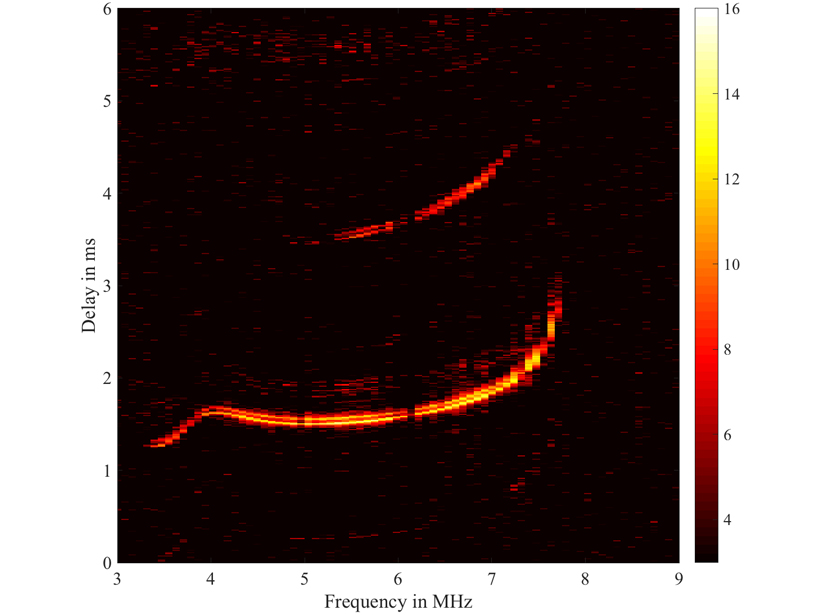Source: Radio Science
The frequency of electromagnetic wave that reflects from plasma is a function of plasma density. Modern ionosondes are based on this principle and can obtain accurate information about the vertical profile of the electron density in the Earth’s ionosphere by transmitting high frequency waves and measuring time delay of reflected waves. These measurements, however, are usually conducted using a single station and cannot provide information about three-dimensional distribution of plasma structures, have limited time resolution, and contain data gaps as many frequency bands are restricted.
Obenberger et al. [2018] report a new and unique experimental method for obtaining ionograms using no man-made transmitter and utilizing broadband high frequency radiation produced by naturally occurring lightning discharges. Some lightning flashes last up to one second and consist of hundreds of powerful short duration bursts across the high frequency and very high frequency bands. Results of this work convincingly demonstrate that a broadband receiver situated to detect both the direct line-of-sight and the ionospheric reflection of lightning electromagnetic radiation could produce ionograms without the need for any man-made transmissions. This work opens new perspectives for efficient and inexpensive three-dimensional imaging of dynamic plasma structures in the Earth’s ionosphere in thunderstorm active regions.
Citation: Obenberger, K. S., Dowell, J. D., Malins, J. B., Parris, R., Pedersen, T., & Taylor, G. B. [2018]. Using lightning as a HF signal source to produce ionograms. Radio Science, 53. https://doi.org/10.1029/2018RS006680
—Victor Pasko, Associate Editor, Radio Science
Text © 2018. The authors. CC BY-NC-ND 3.0
Except where otherwise noted, images are subject to copyright. Any reuse without express permission from the copyright owner is prohibited.

